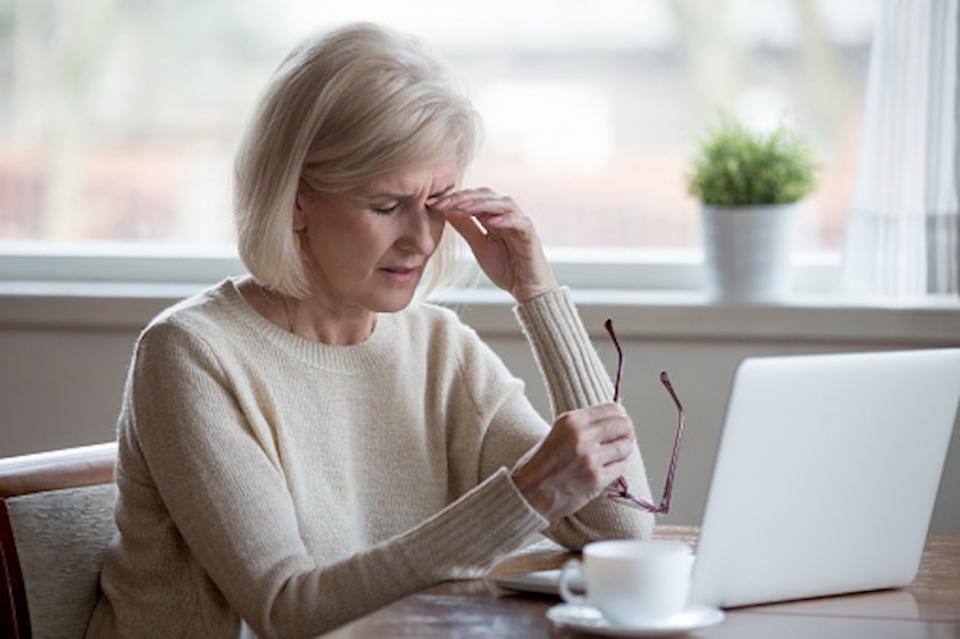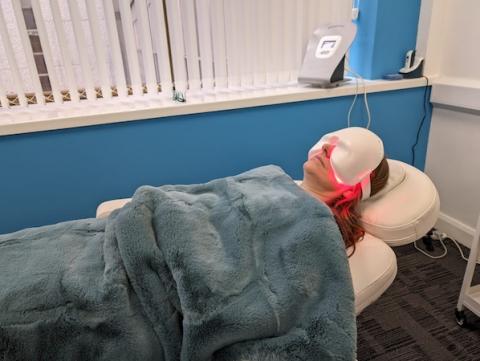Understanding and Managing Menopausal Dry Eye
Published on Thursday, 20th March 2025

If you are in perimenopause/menopause have you noticed a sudden change in how your eyes feel?
Do they feel gritty and irritated?
Do they burn, or sting?
Do they stream on a cold or windy day?
Is working at your computer not as easy as it used to be, because your vision intermittently blurs, or your eyes feel so tired?
If the answer to any of these questions is yes, you may be one of the estimated 10% of women who experience changes in their eye comfort during this time. These feelings of discomfort can vary from mildly inconvenient, to seriously impacting on your quality of life, so should not be ignored if you are having problems.
It would be easy to write off these changes as purely hormonal in origin, and to assume that nothing can be done to help, so in this article we will have a short look at the causes of dry eye, what you can do at home to minimise your discomfort and what other help is available should you need further intervention.
Causes
Dry Eye Disease is a multifactorial disease. That means, it can have many causes, and it is usually a combination of factors that lead to you experiencing symptoms. Some of the most common include:
Screen use is a major contributory issue: we need to blink approximately 15 times per minute to maintain healthy tears and, therefore, eye comfort; yet blink rates fall as low as 5 times per minute when concentrating on a screen.
Environmental factors play a part: if you work in an air-conditioned building, or in a heavily polluted area, you may well get symptoms of Dry Eye Disease.
Certain medications can impact on the quantity of tears that you produce. For example, common medicines such as antihistamines and paracetamol are known to reduce production of the watery component of your tears and therefore increase feelings of dryness.
Background inflammation, whether from other conditions such as arthritis, IBS or diabetes, or from chronic stress, can lead to, or worsen Dry Eye Disease.
And, yes, of course, hormonal changes have an effect.
Androgens, oestrogen and progesterone are all involved in helping to maintain the structures of the eye that produce your tears. When in balance they help supress inflammation, heal wounds, stimulate the production of oils and aid in their secretion.
Changes in Dry Eye Disease symptoms have been noted during a normal menstrual cycle and correspond to the fluctuating levels of the different sex hormones during the month.
In perimenopause, the usual cycle becomes disrupted as oestrogen levels start to decrease and the balance with progesterone and androgens is disturbed.
Self-Help
In general, a good routine of careful eyelid cleansing with a dedicated lid cleaner, regular application of a hot compress to aid secretion of the necessary oils and application of preservative-free lubricating eyedrops will keep symptoms under control.
Making changes to environmental factors, such as using a humidifier; taking regular, conscious, blink breaks when working on a screen; talking to your GP or pharmacist about any medication you are taking; eating an anti-inflammatory diet, rich in plant-based material; and regularly following a stress reduction practice such as mindfulness or yoga can all help minimise your discomfort in the longer term.
The jury is still out whether hormone replacement therapy (HRT) may be helpful in reduction of symptoms. It appears that it may be the balance of the hormones that is so important. While the exact mechanisms are still not fully understood studies have shown that different types of HRT have differing effects on Dry Eye Disease symptoms. Women on oestrogen only HRT report higher levels of discomfort and a lack of tears, whereas those on combined oestrogen and progesterone therapy seem to have better results.
Further Intervention
It is always important, in the first instance, to visit your optician if you are in any way concerned about your eyes or your vision. Remember, there are other changes taking place at the same time as perimenopause/menopause and that the blurring or eyestrain you are experiencing, may be due to needing a new/first spectacle prescription.
Assuming you have had a full eye examination, that your GP is happy with any medication you are taking and that you have done all you can to increase your comfort yourself, and yet your symptoms are still bothering you, now is the time to consider seeking expert help.
A specialist dry eye practitioner will be able to advise on at-home routines in depth and will follow you up to ensure you are getting the most out of what you are doing. They will be able to recommend specialist treatments not generally widely available, such as IrPL (Intense regulated Pulsed Light) or LLLT (Low Level Light Therapy) that are designed to improve the quality of your tears. Above all, they will be entirely focussed on helping you to manage your symptoms and improve your quality of life, because when your eyes feel better, you feel better.
If you would like to discuss this with our specialist dry eye practitioner, send us a WhatsApp or give us a ring on 07561 596128 and we will be pleased to help.
You may also like
--600.jpg)
The Best Daily Cleansing Routine For Dry Eyes
The best routine for keeping your eyes clean and comfortable on a daily basis

Top Tips for Staying Comfortable on a Plane
Why do our eyes feel so uncomfortable on a 'plane? Top 5 tips for ensuring you stay comfortable on a flight.

The Best Treatments for Meibomian Gland Dysfunction : IrPL Vs LLLT
There are now treatments available to bring more relief to those suffering with Meibomian Gland Dysfunction and rejuvenate glands that are no longer functioning optimally.


